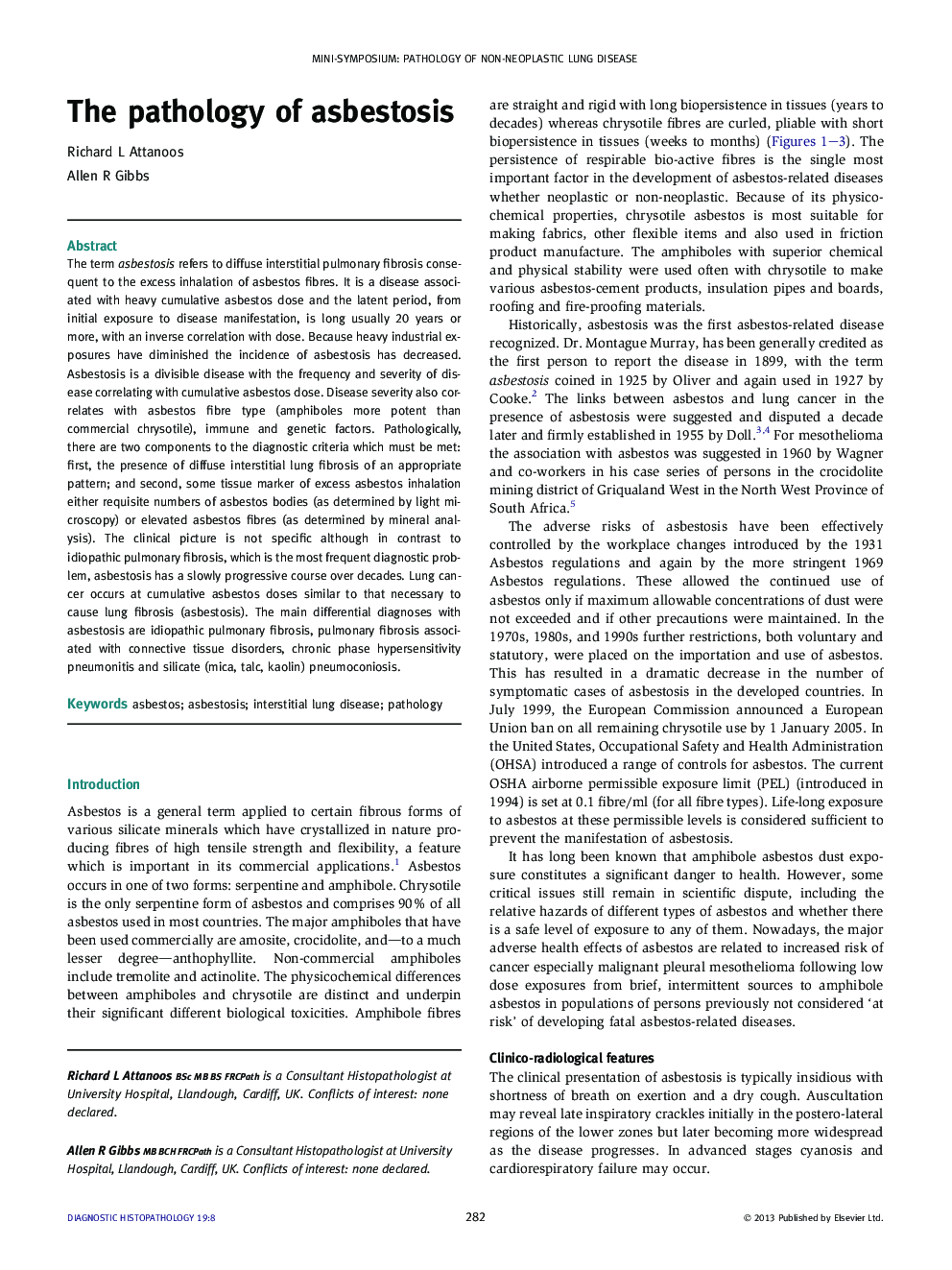| Article ID | Journal | Published Year | Pages | File Type |
|---|---|---|---|---|
| 4131122 | Diagnostic Histopathology | 2013 | 6 Pages |
The term asbestosis refers to diffuse interstitial pulmonary fibrosis consequent to the excess inhalation of asbestos fibres. It is a disease associated with heavy cumulative asbestos dose and the latent period, from initial exposure to disease manifestation, is long usually 20 years or more, with an inverse correlation with dose. Because heavy industrial exposures have diminished the incidence of asbestosis has decreased. Asbestosis is a divisible disease with the frequency and severity of disease correlating with cumulative asbestos dose. Disease severity also correlates with asbestos fibre type (amphiboles more potent than commercial chrysotile), immune and genetic factors. Pathologically, there are two components to the diagnostic criteria which must be met: first, the presence of diffuse interstitial lung fibrosis of an appropriate pattern; and second, some tissue marker of excess asbestos inhalation either requisite numbers of asbestos bodies (as determined by light microscopy) or elevated asbestos fibres (as determined by mineral analysis). The clinical picture is not specific although in contrast to idiopathic pulmonary fibrosis, which is the most frequent diagnostic problem, asbestosis has a slowly progressive course over decades. Lung cancer occurs at cumulative asbestos doses similar to that necessary to cause lung fibrosis (asbestosis). The main differential diagnoses with asbestosis are idiopathic pulmonary fibrosis, pulmonary fibrosis associated with connective tissue disorders, chronic phase hypersensitivity pneumonitis and silicate (mica, talc, kaolin) pneumoconiosis.
